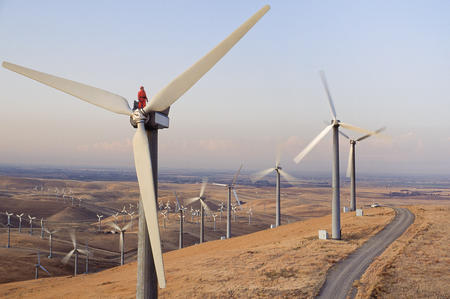COVID-19 hit California hard, as it did states and regions across the world.
Aside from the mental, emotional, and physical toil on Californians, the pandemic drained the economy, causing job losses and financial hardship.
California’s unemployment rate rose by 5% compared to pre-pandemic levels, and an estimated 11.4 million adults state-wide reported having difficulty covering normal household expenses ().
A one size fits all approach was not going to work.
California is poised to become the world’s fourth largest economy (). But it also has the highest poverty rate in the United States (.
Delivering a COVID-19 recovery presented an opportunity to not only move away from ‘traditional’ and dirty industries towards clean jobs and a low carbon economy, but also a chance to tackle social problems – specifically high poverty rates.
But addressing these impacts- as widespread and universal – in such a large, diverse and dynamic state could not be done with a one-size-fits-all approach. Nor could it take a ‘business as usual’ option.
From tech hubs in San Francisco, to vineyards in Napa Valley and military bases in San Diego, California’s geographic diversity required a regionalised approach to shift away from dominant industries, like fossil fuels in Kern County.
Each of its 13 regions face distinct challenges, whether they be economic, environmental or people focused.

A solution with just transition at its heart.
In response to these challenges, Gavin Newsom, Governor of California and North America co-chair of the Under2 Coalition, launched the .
This $600 million programme aims to promote a sustainable and equitable recovery.
Its key objectives are to:
- Promote a regions-up approach to economic resilience, equity and sustainable growth. That means listening to the needs of local communities.
- Support inclusive economic planning. So, ensuring that no one is left behind as the economy grows.
- Align and leverage federal and state funding opportunities. Gain national support to address the lasting impacts from COVID-19.

Committed to equitable outcomes.
It’s hard to define a clear just transition framework when designing programmes like the CERF. They often need to be broad so they can capture and address a large range of issues.
The CERF has been broken into 13 entities – known as High Road Transition Collaboratives – to best meet local needs. Each will receive $5 million to develop a roadmap for their region, including a strategy and recommended series of investments. Funds will also support coordination, capacity building, and research, as well as childcare and transportation to ensure planning tables can be accessed by those traditionally excluded.
The High Road Transition Collaboratives will also fund projects – administered through rolling, competitive grants. To ensure they align with the just transition framework, each must meet the following criteria:
- Demonstrate community support
- Promote state climate goals
- Support labour standards and job quality
- Demonstrate a clear role in the regional strategy
- Complement existing funding sources
We can’t afford to work in silos. Solutions to the impacts of the transition will require participation from a wide and diverse group of stakeholders.
We can’t afford to work in silos. Solutions to the impacts of the transition will require participation from a wide and diverse group of stakeholders.
A flexible outlook, anchored around people.
California’s regional approach to economic transitions has given the state the advantage of flexibility. Its framework can operate across a diverse range of communities and still have impact.
But it can have impact because this flexible approach is anchored around people. To deliver a path to net zero and deliver sustainable economic growth, California has looked specifically at who it needs to target through its just transition work.
With a dedicated funding stream, the state is ensuring that it has the resources to support those who have been left behind by our economy. And by creating accessible, high-quality and long-term jobs, the state can shape its path to a carbon neutral economy.
Focusing on building trust and driving participation.
Where California shows strength and leadership is in its commitment to equity.
The state recognises the need for governments and other entities working on a net zero transition to prioritise disadvantaged communities, or those most impacted. It’s vital that they recognise and understand racial disparities and provide the tools for these communities to participate in decision making.
It’s about building trust and pushing for participation. This will ensure that recovery efforts are sustainable and not temporary.

Opportunities for sharing through the Just Transition Taskforce.
A unique benefit of being a member of the is that California can share these examples, and more, directly with other global states and regions.
The taskforce offers an open forum for subnational governments to exchange knowledge, share their experiences and work together deliver a just transition across their regions.








